Level 2
Digital Animation
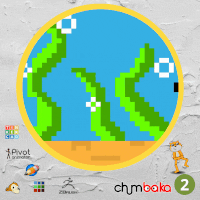
In this course, you will learn the fundamentals of 2D and 3D animations.
Technical objective: You will develop both technical capabilities and creativity by using digital technologies to draw, animate, sculpt, storyboard, and tell stories. These skills are useful in many current and future industries such as education, e-sports, digital advertising, medical imaging, and virtual tourism.
Life skills objective: The projects in this course are fun to develop, but they are also time-consuming. Such work helps develop one’s grit and ability to focus on the task. You will also learn to design from another’s perspective, articulate your design decisions and collaborate with others.
You will require a computer (Windows or Mac) with a mouse and a pair of headphones.
Prerequisite course(s): None
Creative Computing
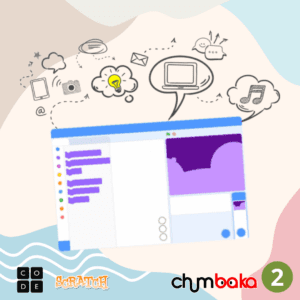
In this course, you will learn the fundamentals of coding for creative expressions.
Technical objective: Explore the world of creative computing using Scratch, a graphical programming tool. You will learn how to create interactive animations, stories, engaging games, and expressive music, all while mastering fundamental programming concepts that will allow you to tackle more complex projects in the future.
Life skills objective: The projects in this course are fun to develop, but they are also time-consuming. Such work helps develop one’s grit and ability to focus on the task. You will also learn to solve problems, think critically and creatively while collaborating with others.
You will require a computer (Windows or Mac) with a mouse and a pair of headphones.
Prerequisite course(s): None
Physical Computing
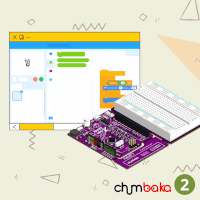
In this course, you will learn to create interactive physical systems with the use of software and hardware that can sense and respond to the world around us.
Technical objective: You will learn how to interface software with hardware such as electronic components, sensors, and actuators by using the GPIO (General Purpose Input / Output) pins of the microcontroller (input, output, digital, analog). These are essential building blocks for the Internet of Things, which power many innovative tools used by scientists and engineers. They are also useful for anyone keen on applying technologies in almost any field – music, art, agriculture, education, entertainment, etc.
Life skills objective: You will experience building a wide range of projects such as musical instruments, interactive arts, DIY robots, and sensor-based plants. Such experience helps you understand how technology coupled with creativity helps turn ideas into solutions. You will also develop practical engineering skills with supporting structures such as paper, cardboard, stick, and wood.
You will require a computer (Windows or Mac) with a mouse and a pair of headphones. You will also require an Arduino Starter Kit.
Prerequisite course(s): Digital Animation and/or Coding and Algorithm
Coding and Algorithm
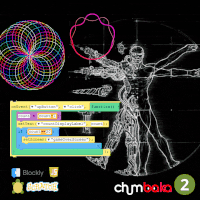
In this course, you will learn the fundamentals of coding and algorithm.
Technical objective: You will first learn basic mathematical concepts such as randomness, binary and boolean before moving on to essential concepts in programming – sequence, loops, parallelism, events, conditionals, and operators. These concepts are then applied in cryptography, database, motion games, and arts using Scratch and Python. These are fundamental knowledge applicable to diverse industries increasingly undergoing automation.
Life skills objective: The projects in this course will help to develop one’s computational thinking skills – decomposition, pattern recognition, pattern generalization, and algorithm design.
You will require a computer (Windows or Mac) with a mouse and a pair of headphones.
Prerequisite course(s): None
Level 3
Game Development
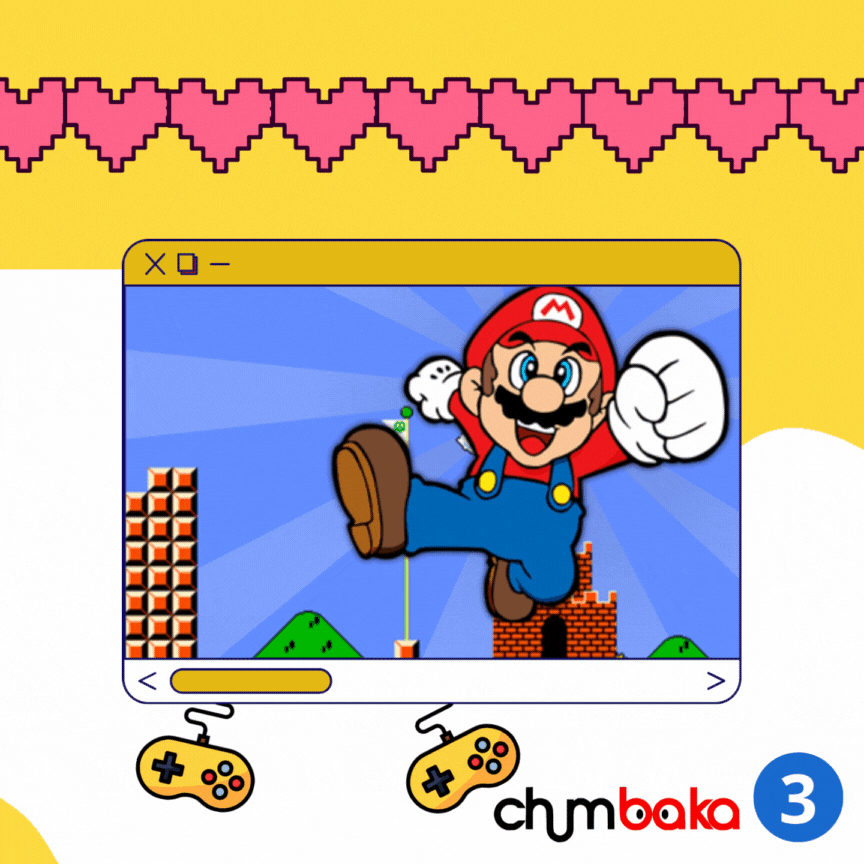
In this course, you will learn the fundamentals of game development.
Technical objective: You will learn to design and develop computer-based games based on an understanding of game mechanics and programming concepts. You will apply physics and mathematical concepts in coding such as acceleration, gravity, velocity, coordinates, and relative movements. The game-design elements learned in this course can be applied beyond game development, in various non-game contexts such as education, marketing, communication, and health.
Life skills objective: In this course, learners develop their creativity by composing music, designing graphics, and creating animation to personalize the games. They build resilience through troubleshooting and solving bugs. They also develop their critical thinking using tools such as Game Design Document to strategize the game mechanics.
You will require a computer (Windows or Mac) with a mouse and a pair of headphones.
Prerequisite course(s): Coding and Algorithm
HCI and Machine Learning
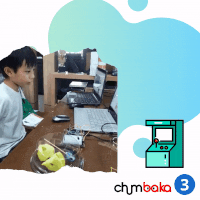
In this course, you will learn the fundamentals of Human Computer Interaction (HCI) and Machine Learning.
Technical objective: Embark on a learning journey to break the boundaries of the software environment, using sensors and actuators to interact with the real-world. Students will also have hands-on experience in collecting data and building models which can later be used for classification by computer programs.
Life skills objective: Students have to complete a final project where they build an arcade game through upcycling. Upcycling is known as creative reuse, which transforms unwanted products into products of better quality. The students have the opportunity to showcase their projects at the end of the course in the form of a mini carnival.
You will require a computer (Windows or Mac) with a mouse and a pair of headphones. You will also require an Arduino Starter Kit.
Prerequisite course(s): At least one of the Level 2 courses
Mobile Apps Development
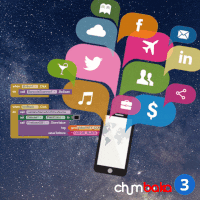
In this course, you will learn to develop mobile apps which are computer programs designed to run on mobile devices – smartphones and tablets.
Technical objective: Mobile devices come with a wide range of sensors such as GPS, touch screen, speakers, accelerometer, and camera. In this course, you apply computer programming to access these sensors and in turn design creative and useful applications. These skills are useful in creating innovative applications that fully use the devices’ sensors and also their outputs.
Life skills objective: You have to complete a showcase project to solve real-life challenges, giving you the opportunity to apply the Design Thinking process: empathy, define, ideate, prototype, and test. In addition, you have to be mindful to create mobile apps with an easy-to-use user interface and deliver a good user experience. You develop both empathy and creativity, essential skills needed to fulfill the needs of people, with the help of technologies.
You will require a computer (Windows or Mac) with a mouse and a pair of headphones. You will also require a mobile device or tablet (both Android and iOS are supported, although some functions may not work on iOS).
Prerequisite course(s): At least one of the Level 2 courses
Embedded System
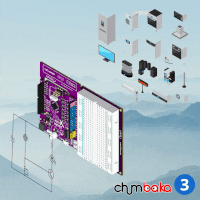
In this course, you will learn how to program and use embedded systems.
Technical objective: You will learn syntax programming which allows you to perform more advanced programming, including the usage of 3rd party libraries and functions to control a wider range of sensors and actuators via GPIOs (General Purpose Input / Output). You will also learn about electronics and circuit theory.
Life skills objective:
You have to complete a showcase project to solve real-life challenges, giving you the opportunity to apply the Design Thinking process: empathy, define, ideate, prototype, and test. You will be using tools such as scamper, why-why analysis, ARM, Gantt chart, and others to learn the end-to-end process of turning ideas into solutions.
You will require a computer (Windows or Mac) with a mouse and a pair of headphones. You will also require an Arduino Starter Kit, a Professional Add-on Kit, and a mobile device or tablet (both Android and iOS are supported, although some functions may not work on iOS).
Prerequisite course(s): HCI and Machine Learning
3D Design for AR & VR
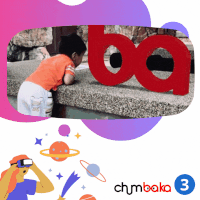
In this course, you will learn the fundamentals of Augmented Reality (AR) and Virtual Reality (VR).
Technical objective: You will develop both technical capabilities and creativity with 3D modeling, animation, and visualization. You will also learn how to incorporate AR and VR technology to bring your projects to life. These skills are useful in many current and future industries such as education, e-sports, digital advertising, medical imaging, and virtual tourism.
Life skills objective: The projects in this course are designed to engage both the left and right brains. It allows you to develop creativity and resourcefulness. You will also learn to explore other facets of being an entrepreneur, which are useful skills to have, from organizing school events, leading fundraising for a noble cause, to even starting a business of your own.
You will require a computer (Windows or Mac) with a mouse and a pair of headphones. You will also require a mobile device or tablet (both Android and iOS are supported, although some functions may not work on iOS). Google Cardboard is optional but will be useful in experiencing the full power of VR.
Prerequisite course(s): Game Development
Level 4
IoT and AI
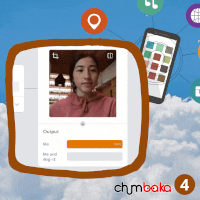
In this course, you will learn the fundamentals of the Internet of Things (IoT) and Artificial Intelligence (AI).
Technical objective: You will extend your knowledge of embedded systems through IoT and AI. Sensors and actuators can now interface to the Internet and communicate with one another. You will also learn how to build apps with AI capabilities.
Life skills objective: Complete a final project to solve real-life challenges with a practical solution by applying the Design Thinking process: empathy, define, ideate, prototype, and test. You will have the opportunity to meet and empathize with challenges faced by real-life people. In IR4.0 where more and more processes and jobs are taken over by machines and AI, empathy is still the key that differentiates humans from computers.
You will require a computer (Windows or Mac) with a mouse and a pair of headphones. You will also require an Arduino Starter Kit, a Professional Add-on Kit, and a mobile device or tablet (both Android and iOS are supported, although some functions may not work on iOS).
Prerequisite course(s): Embedded System and Mobile Apps Development
Database and API
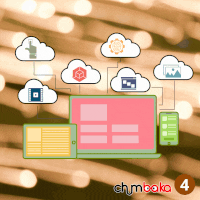
In this course, you will learn how to use mobile apps with online databases and APIs.
Technical objective: You will develop mobile apps with API services. This allows you to collect data from the fleet of devices deployed. You will also learn to use an online database in your mobile apps, so you can store and retrieve data to further enhance the capabilities of your applications
Life skills objective: The projects require a high level of self-learning and Googling ability, as there are vast amounts of resources on the internet. You will also learn how to filter information to find the right solution that fits your needs. The final project serves as a capstone project and needs to be defended through a viva, providing you an experience of what university is like.
You will require a computer (Windows or Mac) with a mouse and a pair of headphones. You will also require a mobile device or tablet (both Android and iOS are supported, although some functions may not work on iOS).
Prerequisite course(s): Mobile Apps Development
Maker Club

In Chumbaka Maker Club, you embark on a journey of self-discovery that prepares you for the future workforce. You work on personal projects that engage and build your skills, passion, and character here.
Comprising students from ages 9 to 19, our Maker Club members are students who have completed ALL our tech courses and decided to endeavour to build their own portfolio and create tech projects based on their own interests, together with their peers and mentors.
Prerequisite course(s): all courses above
